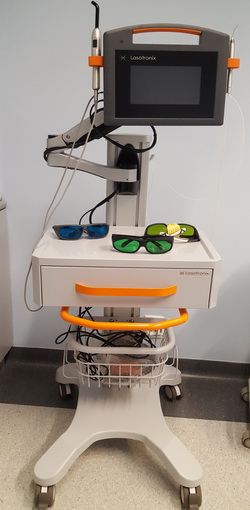Laser gingiwectomy – excision of the overgrown gum
Gingiwektomy is a procedure to remove too much gum growing on the teeth. Overgrown gum significantly hinders proper oral hygiene, can cause periodontal inflammation, inflammation of the gingival pockets at the teeth, inflammation at wisdom teeth – eights as well as aesthetic defects in the form of the so-called gingival smile. In our clinic, we use the latest SmartM Pro Lasotronix laser to perform gingiwectomy and gingiwopplastic surgery. This allows us to practically bloodless, aseptic removal of overgrown tissues, and patients, thanks to modern technology, return to normal functioning after surgery faster. What is the course of treatment? Here is a simplified scheme:
- The dentist's doctor performs anesthesia of overgrown gum tissues. It then removes the excess of the gum scan laser, giving the gums a healthy, aesthetic appearance.
- The procedure completes an accurate instruction on hygiene and post-treatment procedure and laser biostimulation treatment significantly accelerating the healing of gum wounds.
Faqs:
- What is the difference between gingiwoplasty and gingivectomy? – Gingivectomy is a procedure to remove overgrown gums aimed at facilitating hygiene, e.g. in implants, periodontal disease or eighth teeth. Gingivoplasty is a procedure aimed at improving the aesthetics of the gums, e.g. with the so-called gingival smile, when too much gum grows on the crowns of the teeth, optically shortening them.
- What are the recommendations after gyngivoplasty? – After laser gingivectomy and gingivoplasty, use dental rinses prescribed by a doctor for 7 days, brush your teeth gently, without touching your gums and follow a semi-liquid diet.

